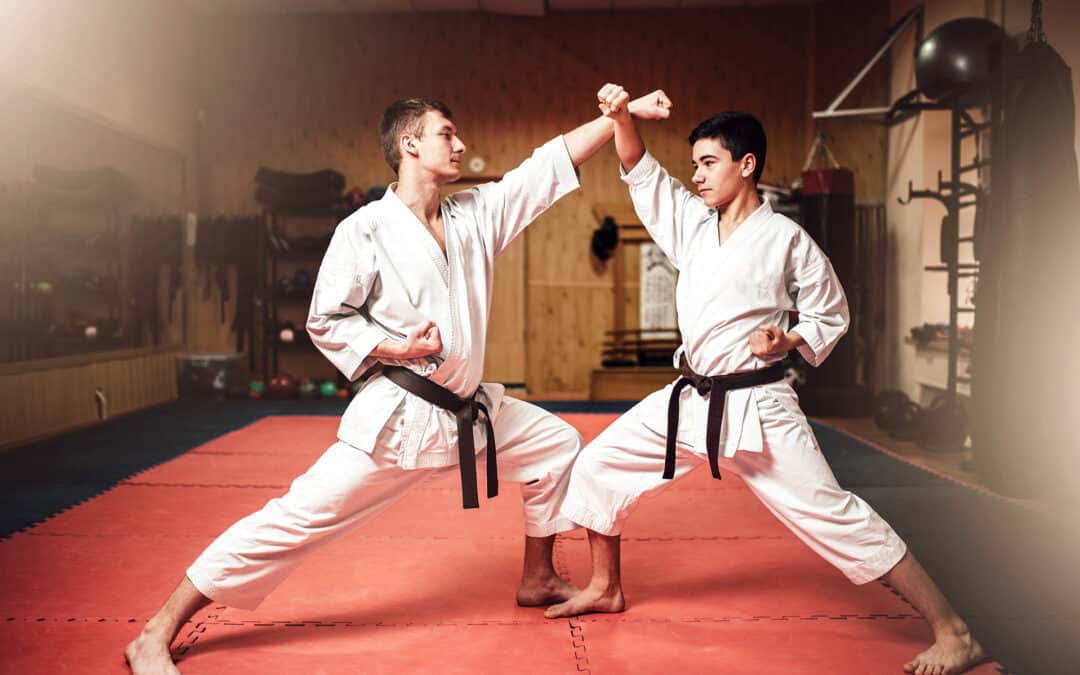Karate is one of the most renowned fighting styles around the world. It relies on defending against an opponent and striking whenever a chance arises. Karate is probably the most preferred self-defense fighting style with hundreds of thousands of participants worldwide. However, is karate good in a real fight?
Karate can be effective in a real fight when facing both an untrained opponent since you’ll have an advantage, or even a trained opponent, as you’ll be playing by similar rules. However, it ceases to be as effective when facing someone trained in other comprehensive combat systems such as MMA, Muay Thai, or boxing.
This article will address whether karate is effective for self-defense, whether it’s legal to use it in a real fight, and how many opponents a black belt in karate can take on.
Table of Contents
Can You Use Karate in a Real Fight?
Karate is probably the first fighting style that most people turn to whenever they want to learn self-defense. It’s easier to pick up, has limited violence, and, apart from learning combat, students are taught self-discipline.
Although it provides you with an effective way to dispel an attack, there are times when karate doesn’t hold in a real fight.
Here are some reasons why karate might not be good in a real fight:
- Students are not exposed to fight-like sparring, aside from a general kumite, making it hard for them to face opponents with more physical experience, such as boxing.
- Some of the moves are only effective in the demonstration but not in a real fight. Not every move will work on every body type.
- It requires disabling your opponent rather than knocking them out like in MMA and boxing.
There are cases where karate might be helpful in a real fight, an unofficial setting. They include:
- Facing an untrained opponent for self-defense.
- Facing another karate fighter with a similar level of experience.
Is it Legal to Use Karate in a Real Fight?
We’ve all heard stories of a karate black belt being charged with assault with a deadly weapon while only using his fists. I’m not sure if this is true or just a tall tale newer martial arts students share with each other. One thing is for certain though, just because you can hurt someone, doesn’t mean you always should.
Karate is a legal martial art that you can use in any physical confrontation. However, some moves are dangerous to you and the opponent, and as such, you should take caution before executing them. Even so, it’s essential to restrain oneself unless there is imminent danger.
As a karate student, you should always try to use less effort and energy when facing a physical confrontation. Some moves like a sidekick to the back of the head are hazardous and could lead to death. More so, if you miss executing this move correctly, you might lose your balance and expose yourself to an attack.
Is Karate Effective for Self-Defense?
Despite some of the warnings and disclaimers, karate is a very effective fighting style for self-defense. Practicing combinations and sparring will enable your brain to make connections without constantly thinking about which move to execute. Students are taught to restrain themselves unless necessary. They’re also taught how to disable an attacker by using less force unless it’s a trained opponent.
People who have trained in karate have a greater chance of fighting off an attack than those untrained. They can anticipate where the attack will come from and take proper measures to diffuse the tension.
However, a new student is not in a position to completely defend themselves since they can’t execute the moves accurately. As such, new students are often discouraged from engaging in any physical confrontation to minimize the risk of injury. There’s no shame in escaping by running away. That is the only way to guarantee you don’t get hurt.
How Many Opponents Can a Black Belt Karateta Take On?
Just the training to get a black belt doesn’t mean a practitioner is dangerous and can take on multiple attackers. Many schools will allow you to practice with two or more attackers to get the improv juices flowing though.
A black belt karateka can take on one trained opponent at a time. However, it is possible for a black belt karateka to take on as many as four untrained and unarmed opponents simultaneously with caution to distance. Each additional trained or untrained opponent severely limits the abilities of a fighter.
When fighting an opponent, a black belt karateka has to weigh the options available and choose nonviolence if possible. Avoid fighting too many opponents at once and try to control the situation and engineer an escape.
If you have no choice but to fight, attempt to take out the strongest opponent first for the most efficient use of energy. As a general rule of thumb, never allow your opponents to corner or surround you. Watch out for armed opponents, and once again if possible, always walk away from the fight.
Final Thoughts
Karate is a very famous martial art with many followers globally. It’s also very effective at dispelling an attack and for self-defense. Although you can use karate in a real fight, there are some cases where it’s not as effective as needed. Don’t take this too negatively though, most martial arts do not provide a curriculum to cover every situation.
When facing a trained opponent in boxing or Muay Thai, karate might turn out to be very unreliable. Karate is also allowed to be used in real fights, but only a trained student may be able to unlock its full potential. It is possible for a black belt karateka to take on several untrained opponents at a time, but only one trained fighter.

